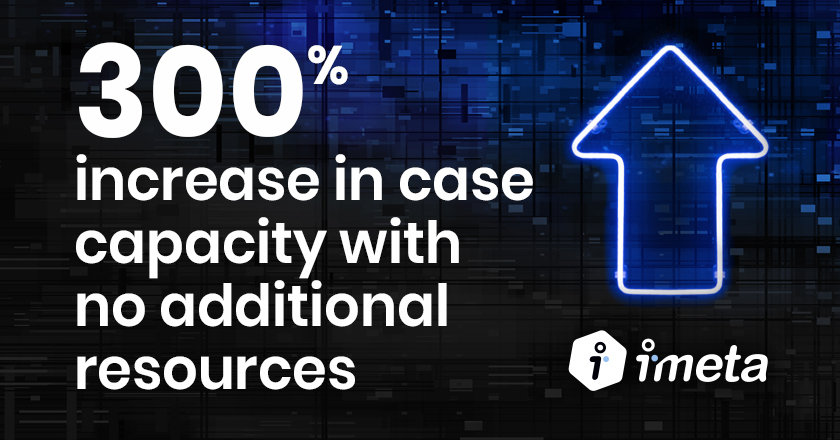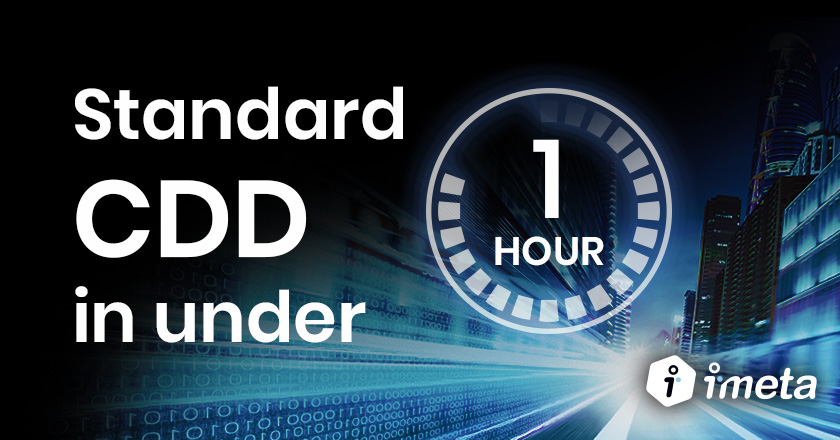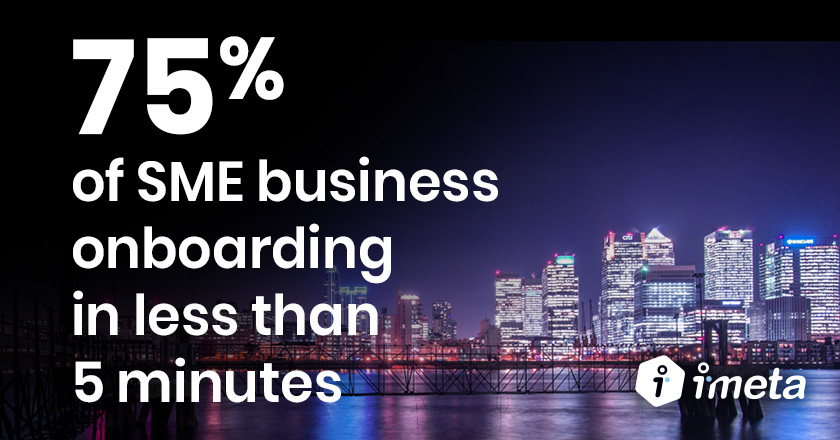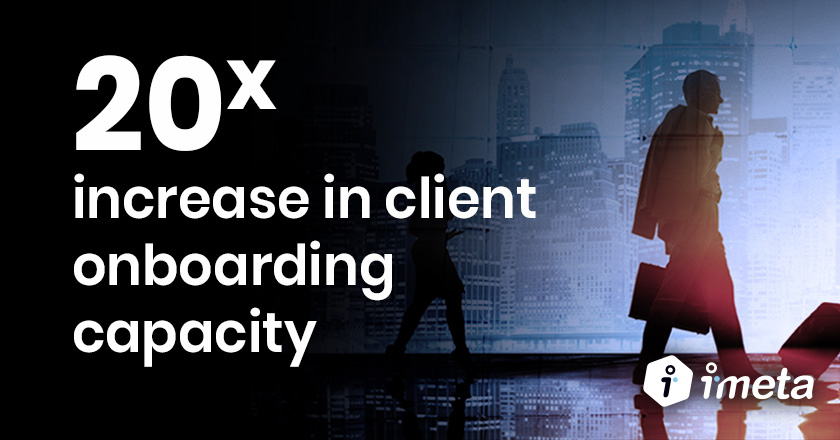Customer Experience
A discussion
In this whitepaper we speak to industry experts about the customer experience origin story and discuss how we need to stop paying lip service to metrics and measures masquerading as customer experience. Instead, the focus should be to strive to genuinely delight clients and stakeholders across the CLM journey and beyond.

Client Experience (CX):
The Origin Story – What and Why
more generally.
01
WHY
- To delight your customer base
- To consider your organisation through the lens of customer need
- To demonstrate that you are actively listening
- To drive overarching strategic objectives
- To react to changes in the market (and your competitors)
- To mitigate risk
- To be seen as constantly innovating
WHAT
- Offering a slick and frictionless customer experience
- Solving the regulatory & compliance challenge
- Reducing headcount
- Reducing onboarding times
- Bringing value to the end users
- Delivering a real-time data driven approach
The How:
A Q&A between Sean Vickers
of Aurora SDE and iMeta
02
1. Personalisation
What does personalisation mean to iMeta?
iMeta: For us, personalisation means giving our clients the ability to meet their own specific requirements. Those requirements are driven by our clients’ desire to personalise the service they offer their own clients. What we’re developing is a standardised KYC onboarding rule set and risk assessment. We have out of the box functionality that you can plug in and play with, however we’ve made it easy to configure and tweak. We can easily change it to our clients’ specific needs for their customers. As well as complying with their policies, onboarding processes and risk scoring, it’s also about giving our clients the ability to tailor the platform to provide a really great experience to their clients.
Sean Vickers: So, if a customer has certain needs, iMeta can tailor the process enough that it feels personalised and bespoke but not so much that you compromise the operational process?
iMeta: Exactly. It ensures that they’re compliant with their regulatory obligations, but it can also tweak and configure to meet their desired outcomes.
Sean Vickers: From a customer experience perspective it’s not one size fits all, but iMeta can tailor elements of its platform so it feels bespoke and ‘white glove’?
iMeta: Yes, we designed our CLM platform to be easy to change, but we recognised that there are certain things which are standard. So, if you’re trading a company based in the British Virgin Isles with an interest swap, trading out of the US, there are certain docs and data you have to collect in order to be compliant with the applicable regulations to that particular business relationship. So, that is the same for everyone, but your risk appetite might be slightly different. Not every bank has the same jurisdiction product client base, they’re all different. What we’re providing is a standardised set of rules, but also the flexibility to adjust them to meet your own banking identity with your clients.
2. Ownership
Who do you think owns client experience in the financial services space?
iMeta: Well, therein lies the issue. It’s in many different areas, right? The relationship manager or front office has the overall relationship with the client, but I think it’s getting the other departments that touch the client journey unified with the overall client experience.
If you can use technology to overlay a coherent process and bring all of the departments and their needs together, then you can align the different requirements which cover sales, compliance, risk etc. That way you can really tailor the client journey in a collectively owned journey.
Sean Vickers: I think it’s an interesting one, right? It’s kind of nebulous who owns client experience because everyone owns it in their own way. Would you also say that iMeta is flexible enough and malleable enough that based on where the centre of thinking is you can tailor the solution to solve in that space?
iMeta: I think that’s exactly it. It’s also about working with the digitalisation team who are looking at improving their technology. We can dovetail into what they are doing and really help them achieve their goals in the digital space, wherever that focus is.
Sean Vickers: Way back when I first started in corporate banking, making my customers happy was this: I’d pre-fill in the forms which we’d then send to them in the post and say, ‘We’ve saved you a job. I’ve gone through and I’ve filled in as much as I can, I’ve put some little things in the side of it, you just have to sign and fill in the things that we don’t know and get it back to us.’
Because in our head we were like, ‘If we do that and Bank X across the road doesn’t do that, we’ve delighted the client!’ Now, that was customer experience, and it was really straight forward, and it wasn’t sexy or automated. If the phone rings, you’re up in three rings. ‘Hi, yep! You’ve got us. What do you need?’ That was customer experience and in some ways those guys haven’t changed.
Then you move into something like onboarding and for them good CX is around metrics. ‘I did something in a certain period of time, I did something and the quality was good. I did something and my interactions with the client, on behalf of the relationship team, were positive.’ That’s customer experience for them.
Then you move down the food chain again and say, ‘Well, I’m making a KYC profile. Have I done it in the right timeline?’ Those metrics cascade and when any of those things don’t work, it surfaces and the RM says, ‘Wait, I’m not having that nice conversation, the customer is not happy!’ That’s all they care about. So, all those issues surface but it’s all the operational elements that are trying to feed something quite qualitative. So, for me, it comes back to very simple basics and then you can make it really complicated.
I think the organisations that have a very heavy ecosystem have started to create roles that look at CX. I think about one senior leader, and he was like, ‘My responsibility is to create good customer experience across the board.’ And within that you had a team. And the reason why they were buying technology was to make the customer experience better, so they were like, ‘Everything is about the RM having a great conversation and anything that detracts from that needs to be fixed’. And that’s not necessarily a bad way to think about it. So, if there’s something in the process that’s detracting from a good conversation, that’s where the focus needs to be.
iMeta: I agree. As a client you still want that interaction, but you don’t want the difficulties of being asked for documentation you’ve already provided. From our clients’ perspective, we are enabling them to use our technology to automate as much of the onboarding and KYC process as possible, to eliminate unnecessary manual process by using rules and workflow to determine what activities are client/client proxy and what are kyc financial crime analyst roles, but at the same time to still deliver that personal touch, which is a great outcome.
Sean Vickers: Yeah. Let’s stop second guessing the customer. They know what they want. If they say, ‘I need to open a cash account in Malaysia,’ that’s my job. I’ve been asked by the board to be fast, to make it simple and if none of those things work, the customer will go somewhere else. So, in some ways, the customer also doesn’t want it to be complicated.
3. Support
What does support look like for you? When things ultimately go wrong, how does iMeta help?
iMeta: That’s easy. We want to fix it. In terms of onboarding, a lot of things can potentially go wrong if a company has manual processes in place. This is often the case due to the data input required and use of workflow systems that follow an iterative process of collecting information about the client, which can then trigger certain risk events. Then there’s handovers and passing tasks and data from department to department. The goal should be to use the right tech and data to automate the more mundane parts of onboarding and identify high risk clients early on, inform them and then have your KYC experts use their forensic analysis to really put that to work, rather than conducting lots of manual data entry and having a very iterative onboarding process with multiple client touchpoints.
Sean Vickers: So, I’m going to a bank, I’m a customer, I’m going to open a cash account somewhere, that goes into the widget factory, across all the levels, gets accepted. In the machine someone incorrectly risk assesses me and says I’m a high risk when actually I’m a low risk and so I get all of this additional work.
I, as a customer, then think, ‘Okay, bad customer experience.’ I then call my RM and they send me a load of paperwork and they then say, ‘You’ve been incorrectly risk assessed in the system. They can then say, ‘Right, we’re going to prioritise that case? We’re going to move them…’
iMeta: That’s where technology comes in, so you don’t get to that place. – where you would get to that is if you’re using too much human interaction and manual processes. Whereas, if you can automate the process, and I mean truly automate large parts if not the whole process – not merely digitising a manual process – you are collecting data effectively, risk assessing effectively, then you know you won’t get to that place to start off with. That’s what we are trying to help our clients achieve.
Sean Vickers: So, the modus operandi with iMeta is to neutralise the problem?
iMeta: Yes, using the right technology. You don’t get into the situation where you have a manual process. Most banks replicate filling out a form and they are using a BPM tool to replicate that. That’s where mistakes will happen. The best approach is to use a combination of an intelligent rules engine and API connectivity to third party sources to enrich data and find information on the client early. Right at the beginning you can work out if they’re going to be high-risk or going through normal due diligence, or if you actually do want to onboard them at all. You can then inform the client of the additional information you’re going to need and the process they’re going to go through from the start.
If you can be more intelligent about it and use tech to actually automate a lot of the manual processes, and flag the high-risk cases for analysts to focus on – that’s where you get some real efficiencies.
That’s what we’re trying to do.
Sean Vickers: So, from customer experience you’re saying, ‘We understand things fall over, there is human error, we’ve taken that learning and so now iMeta’s role is to automate as much of that as possible.’
The External View
Opinion Piece Sean Vickers
Managing Partner Aurora
03

Back in the early 00s when people spoke about customer service, it was all about investing time in completing forms for a client or having meaningful meetings because it was a way of differentiating yourself from another competitor. It was quite straight-forward. It was doing things that helped the client that ultimately made them come back to you. As technology has stepped in and as processes and systems have taken that role, customer experience and CX has taken a backseat for a while. But now it’s back.
It’s interesting to note that not everything banks do is underpinned by customer experience. When there is a big piece of outreach or re-papering, the bank’s outcome is not customer experience, the bank’s outcome is to get a job done. This is where, at times, the term customer experience becomes a bit sloppy or seems less-focused
This is what has to change. We have to ask what makes good customer service today within financial services? In my mind, it’s defined by quality. Quality in itself is an interesting thing to try and measure. It’s underpinned for one, by optimal touch points.
What is the right amount of contact that a client wants when they’re going through a process? If you don’t contact them enough, they’ll feel unloved. If you contact them too much, they’ll feel pestered.
Whether you’re a fund manager or a window cleaner, it’s about that human connection when it comes to making a customer feel seen and heard. Of course, those two jobs have a variety of differences, but ultimately the customer experience for both needs to be about trust and satisfaction. Once it is, the behind-the-scenes processes or automation can function as normal.
The final thing is, what’s the right turn-around time to get a job done? And what’s the right measure? If you bring those together and layer back in some of the original pieces of customer experience based around what actually makes the client happy, then I think we’re in the right space to have a conversation around what good customer service looks like in the FS space.
The rest is buzzword bingo.
The Industry View
Investec’s Chor Teh discusses CLM and why technology and humans need to coexist to achieve best practice.
04
“I head up the Client Lifecycle Management team here at Investec Bank Plc,” explains Chor Teh, a highly-focused industry player with a conversational tone that is informed, punchy and so easy to listen to. “Prior to this role, I also had the opportunity to work with other big banks including JP Morgan and BNP Paribas, to learn and see the best practices and then apply and embed them into what we do now. So, I currently look after the CLM team at Investec. That’s the usual: client onboarding, reviews, off-boarding, and I also have the change function which oversees system implementation and process improvement.”
With a career that spans decades and boasts experience with a variety of leading companies, Teh has seen first-hand some of the key changes in the market. Naturally, this has led to some serious learning and revelations. “CLM has been an area in which I have experienced a mixture of emotions,” he confesses. “In one way, I wear a hat to facilitate new business, the other side of my role is to ensure that the bank is protected by preventing risky business from coming in. So, it is quite a complex dynamic process that you have to go through in a very pressurised environment. It’s fast-paced, high-volume and we also have to ensure there’s continuous improvement.”
When it comes to a fully-functioning CLM approach for new clients, Teh is all about quantifiability. “It has to be quantifiable,” he says. “So, I personally think that to continue to get the business and senior management support, the ROI has to be tangible. Because it’s a continuous investment and to bring stakeholders into the journey, they need to believe in it. So tangible or quantifiable results are key. In the case of Investec, we have examples already. One of them is the KYC automation. My team can onboard larger volumes, more quickly, without compromising data quality. That makes the pace much faster, we can actually activate clients in a couple of minutes in some cases.”
And what about the continuous challenges within client lifecycle? What are his opinions on those?
“It’s something I am exploring right now,” he offers.
“I call it perpetual KYC or continuous monitoring.
That’s the next step.
In the current situation with Covid, cost and efficiency almost become the thing that you need to have in order to achieve optimum results, and one of the ways to get there is through continuous monitoring.

Continuous KYC comes as a key point in how you balance between data, process, technology and people. So, you need structured data to be able to manipulate so you can curate. You also need to upgrade your systems and technology whilst making sure you up-skill your team members to be able to work digitally, not paper-based.”
Teh hovers on the matter of all things digital: “Where we are right now, with the Covid environment, where people are very focused on digital and self-servicing, those are the two key-elements that I would harness and really embrace. Because that’s where people are pouring either investment or technology, so we should use this opportunity to make this area a little more mature.”
With maturity in mind, the next major milestones in CLM are at the forefront of Teh’s thinking and so is the idea of coexisting when it comes to software development. “I’ll be as diplomatic as possible. I can’t say for all, but throughout my career I’ve learned one thing. We have to recognise that a piece of software might be able to solve problem A and B, but not problem C or D. So, you need to apply an appropriate solution in an appropriate manner. It goes back to the idea of an ecosystem and coexisting rather than using one system to take over the whole world.”
The Technology Lens
Conversation Thread:
iMeta & Aurora SDE
05
Aurora SDE: Does technology need to solve customer experience? Or is it a red herring? Do you think it’s the responsibility of technology to solve it?
iMeta: I think it’s the enabling part of giving a good customer experience. So, if your processes are all manual or broken, it doesn’t matter what technology you overlay them with. You’ve got to solve the operational model first.
Technology needs to be part of what the vision is to solve customer experience, but you need the vision, roadmap, tech and people. If you can combine all these elements effectively then it gives you a good chance to deliver a great customer experience.
Aurora SDE: I think there’s also a responsibility of the front office to really understand what their client wants and often this isn’t a conversation they have, but maybe they should. So, what does good CX look like? People have different expectations because we’re all human. For you, it might be, ‘I’d rather not be contacted at all. I just want it done as fast as possible.’ For me, it might be, ‘I want someone to call me.’ Someone else might be, ‘I need you to hand-hold me because I’ve never done this before.’ Three different people, same outcome. Maturity of business, jurisdiction, different products, all these things come into play.
iMeta: You’re right. Customer experience will mean different things to different people. The younger generation will want to do it all online, but the older generation might want that personal touch. They might want someone to pick up the phone. As you say, there are different wants and needs, but actually I don’t think it’s that complex overall.
We don’t like things to be delayed. We’re not used to that. We’re not in that world anymore where we have to accept that things take days or weeks.
We are used to ordering online and receiving delivery the next day, or setting up accounts within minutes, clients are used to that immediacy of service and you need the tech to enable that.
Aurora SDE: There lies the rub, because most people will say, ‘If we’re going to give you a funds journey, the funds journey should work through the lens of technology.’ And you would say, ‘I head up a funds business and that’s not how I would onboard a client,’ and I would say, ‘But we do this in loads of banks and it’s not the most efficient way.’ And at some point, it all just gets lost. It’s cock-eyed and it doesn’t work. There’s something about being true configuration, about really listening.
iMeta: I think you’re right but there is a requirement for standardisation in KYC and the desire to be guided by that standard. But one needs to be mindful that one size does not necessarily fit all. So, you need to take a pragmatic approach and reuse a standardised, regulatory compliant configuration with the ability to easily change the configuration to meet each organisations specific requirements.
Aurora SDE: I think that plays into that box which is, it’s standardised, everyone does it this way. The regulators are going to be happy because you’re following the same way as Bank A and Bank B. In these cases, the COO is saying, ‘Great, same standardised process as Bank A.’ The outcome they are achieving is an efficiency outcome, but it’s not a customer experience outcome.
Because true customer experience is,
‘The process I build is entirely aligned to you.’ It’s a dedication of service to your customer.
2021 and Beyond
When it comes to customer experience and onboarding…
What does good look like?
06
For iMeta, it’s about asking questions:
How do we straight through process the onboarding experience?
How do we ensure it meets regulatory and risk requirements?
How do we put automation in place to make sure that happens?
The customer likes our immediacy of response. It’s about the slickness of getting onboarded quickly and having minimised KYC. Our clients know their customers well in many cases and we are providing technology combined with data assets to automate as much as possible the onboarding and KYC process. This approach enables our clients to massively accelerate their client journeys, whilst ensuring regulatory compliance and providing an optimal CX and relationship with their customers.
From the bank’s perspective, it enables them to massively increase the throughput of client onboarding and therefore increase revenue. That’s what they get out of it and from their client’s perspective, they know they are going to go through a KYC process when being onboarded and ongoing. If you can make that as seamless and as automated as possible for the end client, you can turn something which has traditionally been a laborious interaction with their banks into a slick and pleasurable customer experience.
“Although, if you use our platform,
we ask once and only once”
When you think about the client lifecycle, end-to-end, it’s not just KYC, knowing who/what the client is. It’s about knowing what your business relationship with that entity is. That’s what gets missed most of the time, or at least not joined together with KYC. It’s not just, who/what is the company and who are the players, it’s also about fully understanding your business relationship or relationships with that client and your business interactions with them – much more than just KYC. It’s about knowing who that client is and what you’re doing with them, and therefore what your risk is, as well as identifying potential expansion of the relationship into other products and areas.
If you can hook your KYC system into your banking systems, you can actually automatically set up accounts and pull data back. You can say, ‘We’re expected to have this level of interaction with our client, but we’ve only got two percent of it, then we need a review.’ Everything has been so focused on regulations, that more often than not, the bigger business picture is missed.
That’s where we are seeing the next big drivers for CLM. Joining the participating departments together, ensuring regulatory compliance as a given, and really enabling the front office to drive the business forward.
The Technology Lens
The takeaways
07
*Customer experience isn’t one size fits all. It’s more sophisticated
than that and needs to be treated as such.
*Think about your client. What does your client want? Ask the question.
*Digitalisation doesn’t change how people feel. Customer experience should have the elements of quality, timeliness and a joined up service.
*iMeta understand things fall over, there is human error, we’ve taken that learning and our role is to automate as much of that as possible.
*A piece of software might be able to solve problem A and B, but not problem C or D. You need to apply an appropriate solution in an appropriate manner. It goes back to the idea of an ecosystem and coexisting rather than using one system to take over the whole world.
*Whether you’re a fund manager or a window cleaner, it’s about that human connection when it comes to making a customer feel seen
and heard.
*We want to give the client the ability to change the platform themselves, rather than come to us.
Why work
with iMeta…

iMeta delivers rapid, real-time journeys for customers; from onboarding to off-boarding and everything in between. We provide an accurate, single view of customer data throughout the organisation, ensuring firms remain compliant with KYC and AML regulatory requirements at all times.
Our client lifecycle management (CLM) technology enables rapid engagement with customers in a compliant way whilst simplifying operational processes.
“From onboarding to off-boarding and everything in between; our trusted software helps regulated organisations deliver a first-class customer experience whilst meeting their regulatory and compliance obligations.”
Delivering Proven Results



